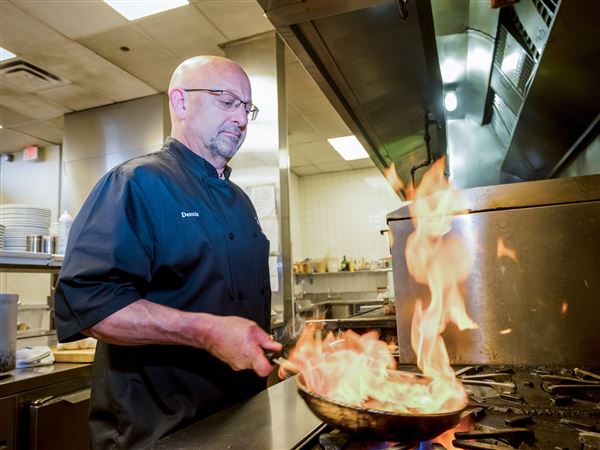Ask the average resident what the Southwestern Pennsylvania Commission is, and some version of "no clue" will be the likely answer.
That's a shame, given that the 30-year-old, federally mandated planning organization has final say on much of the highway spending in the 10-county region.
Over the next three decades that could add up to more than $30 billion in federal and state funds.
Beyond things like bridge repair and road repaving, SPC's decisions can dictate everything from the location of new shopping malls, houses and jobs, to how much pollution we breathe and, perhaps, whether Pittsburgh recovers or continues to falter.
While most locals remain unaware that such a powerful political and social force exists, some public policy students at the University of Pittsburgh (I'm one of them) have spent the past few months getting to know SPC and similar outfits across the country.
On April 19, we told SPC staff and others involved in planning the region's development what we learned, and suggested ways to make the commission more visible and viable.
One of our most surprising findings was the low attendance at SPC board meetings -- not by the public, (although that's almost non-existent), but by the commission members themselves.
SPC has 66 commissioners -- five each from Pittsburgh, Allegheny County and the nine surrounding counties, the rest from state and federal agencies and public transportation organizations. The board is full of top elected officials, particularly county commissioners, with the other seats held by political appointees.
An attendance snapshot, taken from board meeting minutes, shows that:
 The average member attended 2.4 out of 7 meetings.
The average member attended 2.4 out of 7 meetings.
 A quarter of the board missed all seven meetings.
A quarter of the board missed all seven meetings.
 Of the 17 no-shows, 12 were county commissioners or elected chief officials.
Of the 17 no-shows, 12 were county commissioners or elected chief officials.
 Eight commissioners attended five or more meetings.
Eight commissioners attended five or more meetings.
 Three slots remained vacant the entire year.
Three slots remained vacant the entire year.
 The average meeting lasted 38 minutes.
The average meeting lasted 38 minutes.
Also of note: Only one member of the media, a newspaper reporter, covered any of the meetings, perhaps assuring that SPC would remain cloaked in mystery.
The short meetings, commissioner lack of interest and predetermined outcomes -- every issue before the board passed by unanimous vote -- led us to wonder where, exactly, deliberation and real decision-making occurred.
We landed on the agenda-setting executive committee, whose 16 members include one representative from each county and city.
Compared with the full board meetings, there were three more executive gatherings in 2003, they lasted nearly an hour longer, and a larger percentage of commissioners attended. Unfortunately, public participation was limited to professionals like consultants and developers, who had a direct stake in the issues at hand. And like the full board, nearly all decisions were unanimous.
So does the lack of commissioner and public involvement, coupled with the executive committee's scope and activity, make the full board irrelevant? Probably not, but it does signal a need for restructuring.
First, SPC should shift more real decision-making power to the full board, shrink the executive committee and restrict it to business and fiduciary matters. The change could have two results: Commissioners may attend more meetings if their votes matter more, and they may not feel constrained to rubber stamp executive committee votes cast by a close colleague.
Second, SPC should cast a wider net by replacing one commissioner from each county and Pittsburgh with an elected, at-large commissioner. These "regional citizens" would cast their votes in the interest of the entire region, rather than on behalf of local constituents, as SPC's current elected officials often do.
Some of SPC's most successful counterparts already have regional representatives, including those in Atlanta, Boston and Minneapolis.
We also recommend meeting attendance requirements, a bigger meeting quorum (currently 15 out of 61 voting commissioners) and stronger term limits for board members.
Removing no-shows may be a way to make room for commissioners with an abiding interest in development projects that benefit everyone.
We're interested to hear what SPC thinks. Two commissioners attended our presentation, including Pittsburgh City Councilman Bill Peduto, who pledged to deliver our report to SPC Executive Director James Hassinger for inclusion on the next board meeting agenda.
A message we hope the commissioners take away is that while many reforms are necessary to make us more competitive, improving SPC representation and decision-making is a vital early step.
Like a body fighting infection, SPC needs to boost its own health to better ward off sprawl, economic decline and other ailments that weaken our entire region.
Another goal: Raising public awareness. When voters pick a top local political leader, they should know that they may also be choosing an SPC commissioner who will represent 2.7 million southwestern Pennsylvania neighbors. They should also know that SPC has an enormous capacity to improve our quality of life, but at this point it is not living up to its potential, and even some of its own members aren't giving it its due.
Finally, if we hope to lure businesses and their employees here, and keep the ones we have, SPC needs to pursue a unified vision, free of the factional mindset that pits one community against another.
With Pittsburgh on the financial brink, population continuing to trickle away, and the city and Allegheny County exploring a merger, talk of regionalism and how to achieve it is blooming. Fortunately, the structure exists in SPC and the way forward is coming into focus. What's needed is the will.
First Published: May 2, 2004, 4:00 a.m.












